When it comes to compact SUVs, the Kia Niro and Suzuki S-Cross are two prominent contenders that have captured the attention of automotive enthusiasts looking for practicality, efficiency, and advanced technology. Both vehicles bristle with features designed to meet the diverse needs of modern drivers. This comparison will delve into the technical specifications, innovations, and overall driving experience of these two popular models.
Kia Niro vs Suzuki S-Cross – Differences & prices compared
Both models have their strengths – but which one suits you more?
Compare performance, efficiency, price and space directly: Kia Niro or Suzuki S-Cross?
Design and Dimensions
The Kia Niro showcases a contemporary SUV silhouette with a length of 4420 mm, a width of 1825 mm, and a height of 1545 mm. This compact form lends itself well to urban driving while providing ample interior space, with a trunk capacity of 451 liters.
On the other hand, the Suzuki S-Cross measures 4300 mm in length, 1785 mm in width, and 1580 mm in height. It offers a slightly smaller trunk capacity of 430 liters, although it maintains a rugged appearance that enhances its off-road capability.
Powertrain Options
The Niro comes equipped with a choice of two hybrid engines: a full hybrid engine producing 129 HP and a plug-in hybrid variant offering a robust 171 HP. Its efficiency is commendable, with fuel consumption figures as low as 4.4 liters per 100 km and a CO2 output of only 100 g/km for the eco-conscious driver.
Conversely, the Suzuki S-Cross offers a full hybrid engine rated at 116 HP and a petrol mild-hybrid engine with a maximum output of 129 HP. While slightly less powerful, the S-Cross boasts respectable fuel consumption ranging from 5.1 to 5.8 liters per 100 km, reflecting its versatility for both city and countryside driving.
Transmission and Driving Experience
Both models provide automatic transmission options. The Kia Niro is available with a dual-clutch automatic transmission for a smooth driving experience, while the S-Cross offers a choice between automated manual and traditional manual gearboxes. The driving characteristics of each vehicle differ; the Niro delivers a refined ride suitable for urban environments, while the S-Cross presents a slightly sportier and responsive handling profile.
Performance and Acceleration
The acceleration figures tell an interesting story. The Niro is capable of reaching 0-100 km/h in approximately 11.3 seconds, making it a bit slower compared to the Suzuki S-Cross, which achieves the same sprint in just 9.5 seconds. This performance advantage could make the S-Cross a more enticing choice for those who enjoy spirited driving.
In terms of top speed, the S-Cross again takes the lead, with a maximum speed of 195 km/h, compared to the Niro’s top speed of 160 km/h, reinforcing its sporty credentials.
Safety and Innovation
Safety features are paramount in both models. The Kia Niro is equipped with an array of advanced driver-assistance systems (ADAS) including adaptive cruise control, lane-keeping assist, and collision avoidance technology, earning it commendable safety ratings. Meanwhile, the Suzuki S-Cross also provides numerous safety innovations, such as Suzuki Safety Support technologies that enhance the driving experience by promoting safety through monitoring and assistance features.
Interior Features and Comfort
Stepping inside, the Kia Niro offers a modern cabin with high-quality materials and a user-friendly infotainment system. With five seats, it prioritizes comfort and versatility, making it an ideal choice for families.
While the S-Cross maintains a functional interior with solid build quality, it doesn’t quite match the premium feel of the Niro. However, it still provides a spacious cabin that comfortably seats five and ensures a pleasant journey for all occupants.
Conclusion: Which SUV Comes Out On Top?
Choosing between the Kia Niro and Suzuki S-Cross largely hinges on individual preferences and driving needs. If fuel efficiency, advanced technology, and interior comfort are top priorities, the Kia Niro may be the way to go. However, for those seeking spirited performance, all-round versatility, and a rugged aesthetic, the Suzuki S-Cross presents a compelling alternative. Ultimately, both SUVs offer excellent value and capabilities, perfectly aligning with the demands of today’s drivers.
Here’s where it gets real: The technical differences in detail
Costs and Efficiency:
Looking at overall running costs, both models reveal some interesting differences in everyday economy.
Suzuki S-Cross has a clearly perceptible advantage in terms of price – it starts at 21800 £, while the Kia Niro costs 29100 £. That’s a price difference of around 7372 £.
Fuel consumption also shows a difference: Kia Niro manages with 2.40 L and is therefore clearly more efficient than the Suzuki S-Cross with 5.30 L. The difference is about 2.90 L per 100 km.
Engine and Performance:
Under the bonnet, it becomes clear which model is tuned for sportiness and which one takes the lead when you hit the accelerator.
When it comes to engine power, the Kia Niro has a distinct edge – offering 180 HP compared to 110 HP. That’s roughly 70 HP more horsepower.
There’s no difference in top speed – both reach 185 km/h.
There’s also a difference in torque: Kia Niro pulls somewhat stronger with 265 Nm compared to 235 Nm. That’s about 30 Nm difference.
Space and Everyday Use:
Cabin size, boot volume and payload all play a role in everyday practicality. Here, comfort and flexibility make the difference.
Both vehicles offer seating for 5 people.
In curb weight, Suzuki S-Cross is slightly lighter – 1280 kg compared to 1474 kg. The difference is around 194 kg.
In terms of boot space, the Kia Niro offers barely noticeable more room – 451 L compared to 430 L. That’s a difference of about 21 L.
In maximum load capacity, the Kia Niro performs to a small extent better – up to 1445 L, which is about 215 L more than the Suzuki S-Cross.
When it comes to payload, Kia Niro slightly takes the win – 466 kg compared to 405 kg. That’s a difference of about 61 kg.
Who comes out on top?
Overall, the Kia Niro shows itself to be dominates this comparison and secures the title of DriveDuel Champion.
It convinces with the more balanced overall package and proves to be the more versatile choice for everyday use.
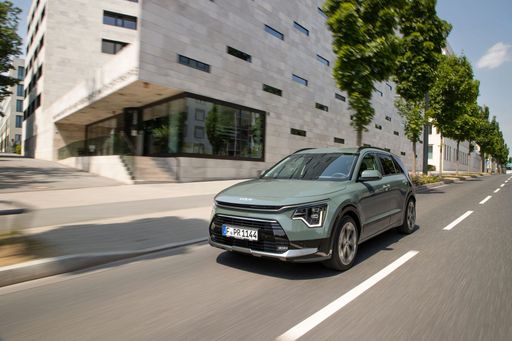 @ Kia Corporation
@ Kia Corporation
Kia Niro
Kia Niro
The Kia Niro blends clever packaging and modern styling into a compact crossover that’s refreshingly sensible for daily life. It’s comfortable, economical and packed with user‑friendly tech, so if you want a fuss‑free family car with a touch of green credibility, the Niro is worth a test drive.
details @ Kia Corporation
@ Kia Corporation
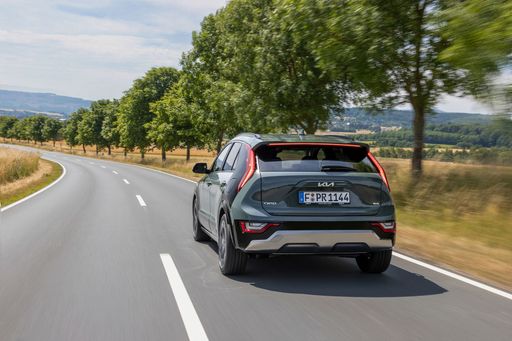 @ Kia Corporation
@ Kia Corporation
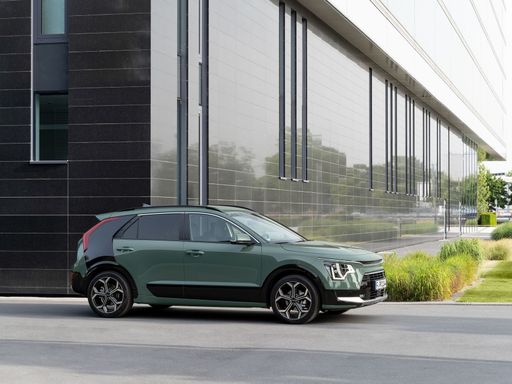 @ Kia Corporation
@ Kia Corporation
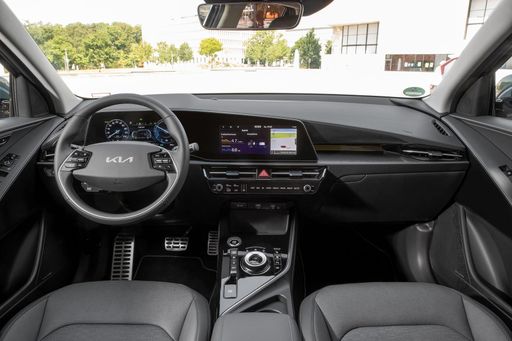 @ Kia Corporation
@ Kia Corporation
 @ Kia Corporation
@ Kia Corporation
Suzuki S-Cross
The Suzuki S-Cross is a neatly packaged crossover that puts everyday practicality ahead of showy theatrics, offering a comfortable cabin and predictable handling that suit family life and weekend errands alike. It’s not a headline-grabber, but its sensible packaging, low-key charm and reputation for reliability make it a shrewd choice for buyers who prefer smart value over flash.
details @ Suzuki Motor Corporation
@ Suzuki Motor Corporation
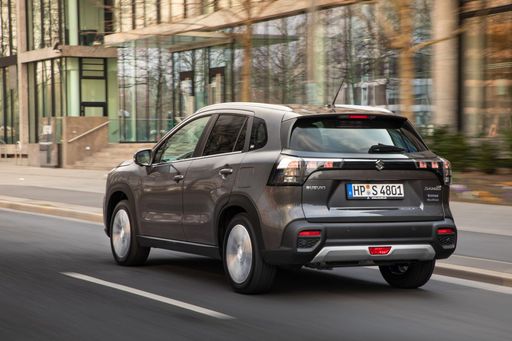 @ Suzuki Motor Corporation
@ Suzuki Motor Corporation
 @ Suzuki Motor Corporation
@ Suzuki Motor Corporation
 @ Suzuki Motor Corporation
@ Suzuki Motor Corporation
 @ Suzuki Motor Corporation
@ Suzuki Motor Corporation
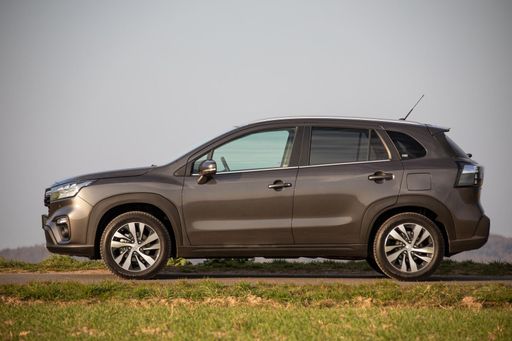 @ Suzuki Motor Corporation
@ Suzuki Motor Corporation
 @ Suzuki Motor Corporation
@ Suzuki Motor Corporation
 @ Kia Corporation
@ Kia Corporation
|
 @ Suzuki Motor Corporation
@ Suzuki Motor Corporation
|
|
|
|
Costs and Consumption |
|
|---|---|
|
Price
29100 - 38600 £
|
Price
21800 - 34200 £
|
|
Consumption L/100km
2.4 - 4.9 L
|
Consumption L/100km
5.3 - 5.8 L
|
|
Consumption kWh/100km
-
|
Consumption kWh/100km
-
|
|
Electric Range
57 - 62 km
|
Electric Range
-
|
|
Battery Capacity
1.3 - 11.1 kWh
|
Battery Capacity
-
|
|
co2
53 - 111 g/km
|
co2
119 - 138 g/km
|
|
Fuel tank capacity
37 - 42 L
|
Fuel tank capacity
47 L
|
Dimensions and Body |
|
|---|---|
|
Body Type
SUV
|
Body Type
SUV
|
|
Seats
5
|
Seats
5
|
|
Doors
5
|
Doors
5
|
|
Curb weight
1474 - 1594 kg
|
Curb weight
1280 - 1385 kg
|
|
Trunk capacity
348 - 451 L
|
Trunk capacity
430 L
|
|
Length
4420 mm
|
Length
4305 mm
|
|
Width
1825 mm
|
Width
1785 mm
|
|
Height
1545 mm
|
Height
1580 mm
|
|
Max trunk capacity
1342 - 1445 L
|
Max trunk capacity
1230 L
|
|
Payload
466 kg
|
Payload
395 - 405 kg
|
Engine and Performance |
|
|---|---|
|
Engine Type
Full Hybrid, Plugin Hybrid
|
Engine Type
Petrol MHEV
|
|
Transmission
Automatic
|
Transmission
Manuel, Automatic
|
|
Transmission Detail
Dual-Clutch Automatic
|
Transmission Detail
Manual Gearbox, Automatic Gearbox
|
|
Drive Type
Front-Wheel Drive
|
Drive Type
Front-Wheel Drive, All-Wheel Drive
|
|
Power HP
138 - 180 HP
|
Power HP
110 HP
|
|
Acceleration 0-100km/h
9.9 - 11.4 s
|
Acceleration 0-100km/h
-
|
|
Max Speed
170 - 185 km/h
|
Max Speed
180 - 185 km/h
|
|
Torque
265 Nm
|
Torque
235 Nm
|
|
Number of Cylinders
4
|
Number of Cylinders
4
|
|
Power kW
102 - 132 kW
|
Power kW
81 kW
|
|
Engine capacity
1580 cm3
|
Engine capacity
1373 cm3
|
General |
|
|---|---|
|
Model Year
2025
|
Model Year
2025
|
|
CO2 Efficiency Class
C, B
|
CO2 Efficiency Class
D, E
|
|
Brand
Kia
|
Brand
Suzuki
|
Is the Kia Niro offered with different drivetrains?
The Kia Niro is available as Front-Wheel Drive.
The prices and data displayed are estimates based on German list prices and may vary by country. This information is not legally binding.
